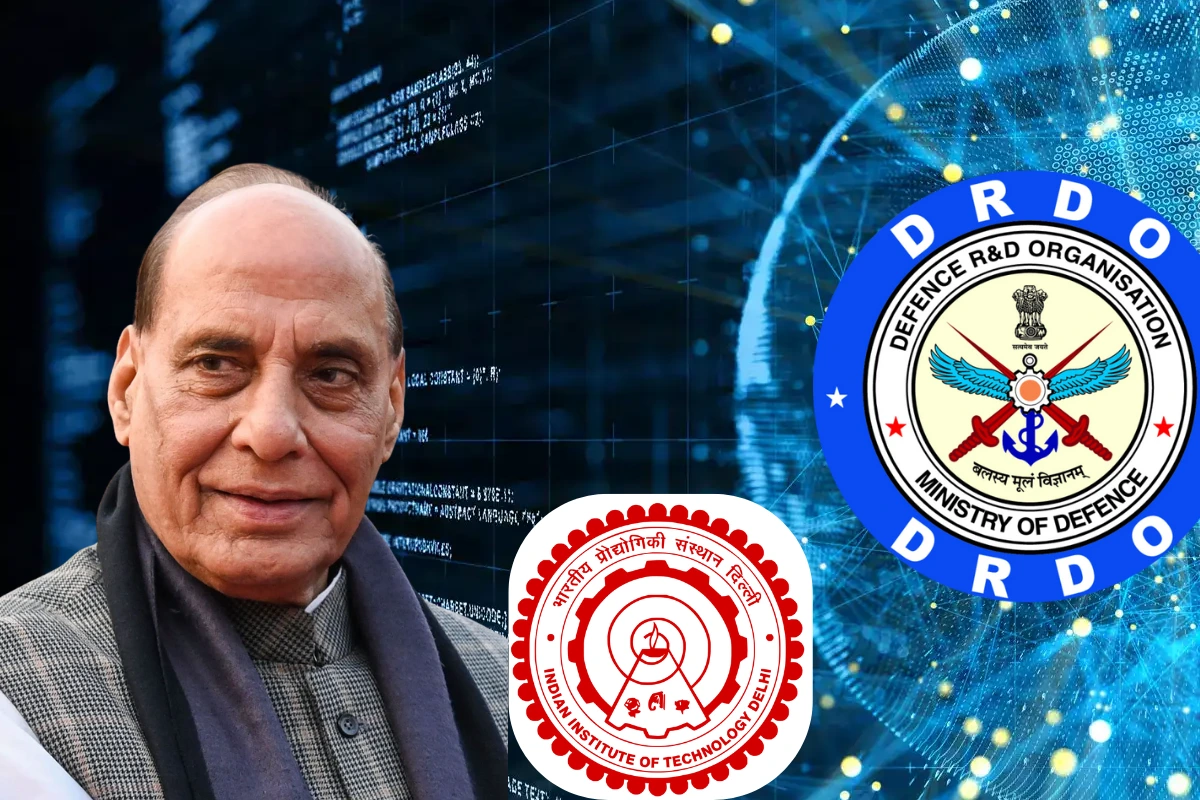Summary:
- DRDO and IIT Delhi demonstrate India’s first campus-scale free-space quantum key distribution (QKD) using entangled photons over a distance of 1 km.
- This advancement showcases secure communication powered by quantum physics—nearly impossible to hack or intercept.
- The project is part of India’s broader ambition under the ₹6,000 crore National Quantum Mission, aligning with global efforts in quantum security.
- Human connection: This isn’t just a technical feat—it’s a major step toward protecting India’s citizens, soldiers, and sovereignty in the digital era.
At a quiet research lab nestled inside the Indian Institute of Technology (IIT) Delhi, a beam of light silently shot across 1 kilometre of airspace this month. To most, it would appear ordinary. But for India’s defence scientists and academic researchers, this unassuming beam represented a historic breakthrough: the nation’s first successful quantum-entangled secure communication link in open air.
Conducted jointly by DRDO (Defence Research and Development Organisation) and IIT Delhi, the experiment achieved entanglement-based free-space quantum key distribution (QKD) over a distance exceeding 1 kilometre—without using optical fibers. And with that, India took a confident stride into the future of unhackable communication.
“Technology like this doesn’t just stay in labs. It will shape how our military speaks on the battlefield, how banks secure transactions, and how everyday citizens trust digital privacy,” said Prof. Bhaskar Kanseri, the principal investigator and physicist leading the effort at IIT Delhi.
The Science Behind the Silence
At its core, the experiment was about using the mysterious properties of quantum entanglement, where two particles—photons in this case—are linked in such a way that the state of one instantly affects the other, even across vast distances. If an outsider tries to intercept the communication, the particles’ delicate quantum state collapses, alerting the sender and recipient.
This is the promise of quantum security: not stronger locks, but doors that vanish if someone tries to pick them.
Over the open skies of IIT Delhi’s campus, entangled photons carried encryption keys across a free-space optical channel. The results were remarkable—achieving a secure key rate of ~240 bits per second with a quantum bit error rate under 7%. These numbers, while modest on the surface, are a huge leap in India’s ability to build secure networks without physical cables.
“It’s not about speed—it’s about certainty. A single bit securely shared through entanglement is worth a thousand through vulnerable channels,” said a young Ph.D. researcher on Prof. Kanseri’s team, visibly proud.
A National Security Imperative
Behind the white coats and precision optics lies a deeper story: a race for sovereignty in the quantum age. In recent years, China launched a quantum satellite (Micius) capable of secure messaging over 1,200 km, and Europe is investing heavily in cross-country QKD networks.
India, through this experiment, signals it won’t be left behind.
“This is a game changer,” said Defence Minister Rajnath Singh, who praised the experiment for its strategic relevance. “As warfare evolves into cyber domains, the ability to communicate securely—without fear of interception—is as vital as any missile or drone.”
Indeed, DRDO sees this success as a prototype for battlefield communications. Imagine soldiers coordinating in remote terrains or commanding a drone swarm—all via a quantum-secured link immune to hacking or jamming.
A Human-Scale Case Study: The Soldier’s Whisper
To understand the real-world impact, picture this: An Indian Army unit is stationed along a volatile border. A quantum-linked drone in the sky relays visual intelligence back to command. If an enemy tries to intercept the feed, the quantum entanglement instantly flags the breach and shuts the link—no data stolen, no orders compromised.
In such scenarios, this isn’t just technology. It’s a shield for lives.
The IIT Delhi experiment, conducted over buildings and trees with all their atmospheric interference, simulated just such an environment. And it passed with flying (or rather, beaming) colors.
The Road Ahead: From Kilometers to Constellations
India’s vision doesn’t stop at 1 kilometre. The next milestones include:
- Longer-range ground QKD (10–100 km)
- Quantum communication between moving platforms (vehicles, drones)
- Satellite-based QKD (beyond 1,000 km)
- Quantum Internet prototypes for real-time civilian applications
And under the National Quantum Mission launched in 2023, the government has allocated ₹6,000 crore to develop quantum technologies over the next eight years.
IIT Delhi’s director Prof. Rangan Banerjee called the success “a moment of pride and promise,” stressing how collaboration between defence, academia, and industry can accelerate India’s quantum momentum.
Entangled in Hope
While the experiment is technical, the emotion behind it is deeply human.
“In this project, we weren’t just working on light—we were working on trust,” said a female postdoc researcher, who was part of the team handling photon detectors. “Because every secure message that travels tomorrow, every life saved by a protected command, will trace back to these first quiet beams we tested in the summer sky.”



